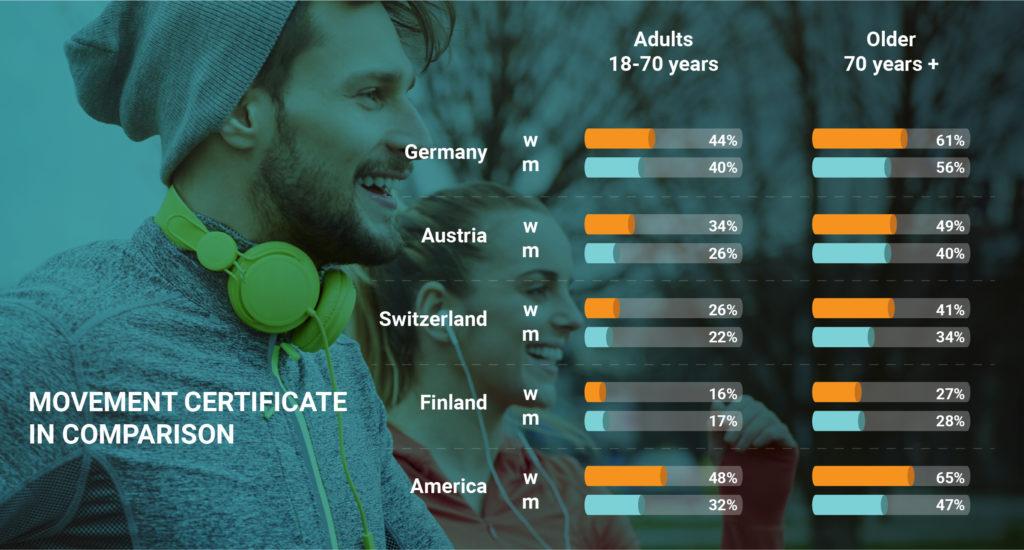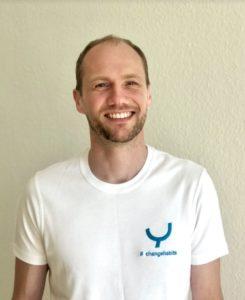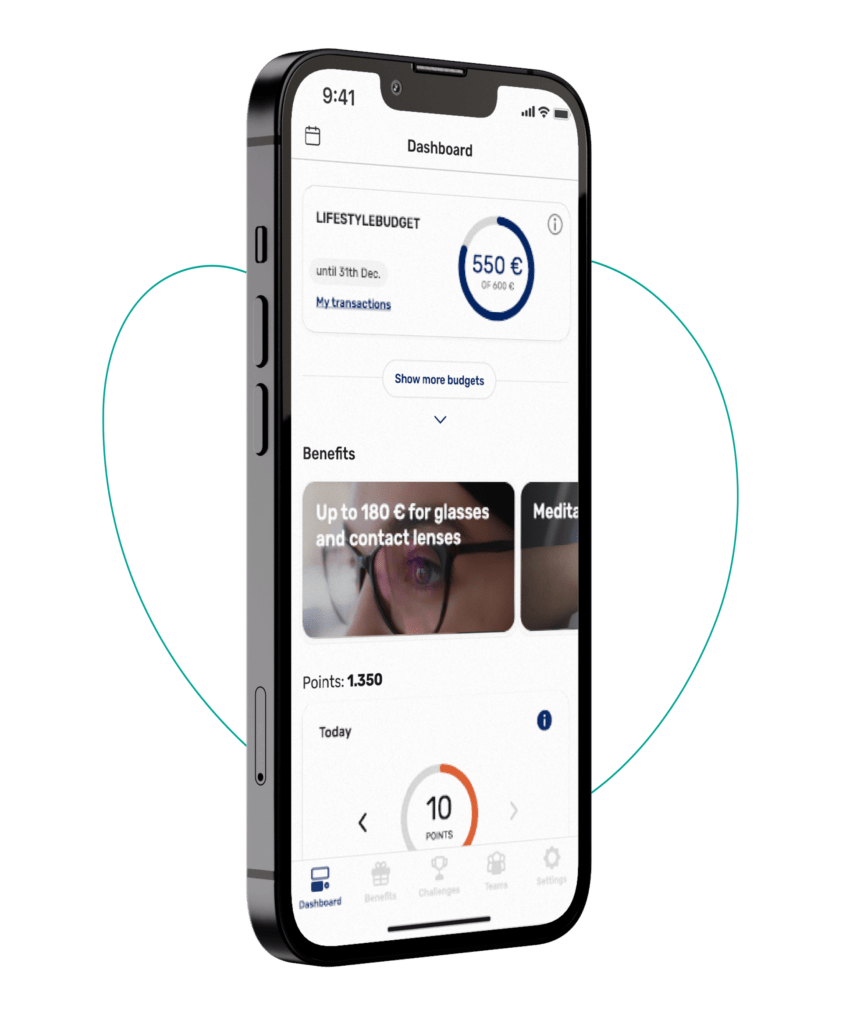
Healthy through movement - Especially in times of Covid
An update on the ongoing pandemic – We are now in the third year of the Covid pandemic and an end remains unclear. Regular exercise is good for your health and this is especially true in the context of the Coronavirus. Based on the current state of scientific knowledge, this article examines the importance of physical activity and uses the example of a health app to show how one can digitally motivate people to exercise more.
Reading duration: 6 minutes
The importance of exercise for health
Exercise is undeniably an important pillar for promoting physical and mental health. Regular exercise is important for the body of all ages and it is never too late to move more to improve our health. With a healthy lifestyle, which undoubtedly includes regular exercise, diseases can be effectively prevented. Lack of exercise, on the other hand, is a significant risk factor for the widespread diseases diabetes type 2, cancer, cardiovascular diseases and others. Worldwide, for example, 7-8 % of all deaths due to cardiovascular diseases are attributable to insufficient physical activity (Katzmarzyk et al., 2022). Those who meet the recommended level of physical activity have a 20-30 % lower risk of premature death.
The current “Global status report on physical activity 2022” of the World Health Organisation (WHO) paints an alarming picture in terms of sports and exercise: Large parts of the world’s population do not exercise enough. According to the report, physical inactivity causes around 50 million new civilisation diseases. From an economic point of view, physical inactivity costs health systems around the world about 27 billion US dollar annually.
As can be seen in Figure 1, Germany comes off with a miserable physical activity report card from the WHO: 44 % of women and 40 % of men are considered sedentary because they do not reach the recommended minimum levels of 150 min of moderate or 75 min of intensive aerobic activity per week. But it doesn’t always have to mean doing sports or going to the gym. Moderate exercise in everyday life, such as cycling to work, taking the stairs instead of the lift, or a digestive walk during the lunch break, would already achieve a lot.

Figure 1: Aktuelles Sportzeugnis der WHO – Bewegungsarmes Deutschland im Vergleich (vgl. WHO Country Profiles unter: https://www.who.int/teams/health-promotion/physical-activity/global-status-report-on-physical-activity-2022) Proportion of those who do not achieve the minimum amount of physical activity recommended by the WHO to maintain good health.
Exercising during the Covid pandemic
With the outbreak of the COVID-19 pandemic, the options for exercise & sports were temporarily severely restricted due to restrictive regulations, such as the closure of sports facilities or quarantine measures. Although Covid still seems to be an issue at the moment, the pandemic is officially ongoing and the upcoming winter is not expected to bring a clear tightening of infection figures, looking back to 2022, the options for exercising are significantly improved again. This is relevant insofar as exercise also provides an important health benefit in regards of Covid.
For Germany, BECK et al. (2022) have shown in their current review in the context of the Covid situation that since the beginning of the pandemic in 2020 there has been an overall reduction and various shifts in exercise behaviour in this country. The types of sports practised shifted towards more endurance sports, such as jogging or cycling, and strength training, which can be done on one’s own. There was also an increase in home fitness, digital applications and sports that can be done with very little equipment. From then on, people also increasingly focused on low-intensity sports, i.e. moderate training.
Since health effects through physical activity include not only doing sports but also movement in everyday life, data on daily steps are also of interest in this context. The popular 10,000 steps per day are to be interpreted in accordance with the WHO recommendations for physical activity. Comprehensive data from a worldwide study from 01/2019 to 02/2022 have now been published in the specialist journal LANCET (TISON et al. 2022). It was shown that the worldwide step behaviour could recover somewhat, but still remained low compared to the baseline value (only 5,323 steps per day anyway).
Digital health in times of Covid: the example of the YAS.life health app
Under the name YAS.life, MAGNUM EST Digital Health GmbH develops digital applications as white label solutions for health insurance companies, insurance companies and companies in the field of health management. Physical activity and diligence should not only be physically rewarding: YAS.life offers its own innovative fitness app as a bonus programme. To use the app, it is only necessary to synchronise a fitness app (e.g. Apple Health, Google Fit) or a popular fitness tracker (e.g. Fitbit, Polar, Garmin) with the YAS app. The app uses numerous gamification elements and behaviour change techniques. With the help of the app, users can receive various rewards for physical activity, such as walking (number of steps), healthy eating, mindfulness and preventive care. The company’s goal is to motivate more people to adopt a healthy lifestyle in the long-term and, together with its partners, to offer attractive benefits for physically active people in the long-term. In the future, they want to create even more synergies together and use the app to inspire customers for an active lifestyle and reward them at the same time.
In order to be able to examine an optimal before/after comparison with long-term effects, the physical activity behaviour in terms of daily steps was examined among users who already used the YAS app before Covid (Data in the 5-digit range). The reduction in physical activity in the time frame of the pandemic previously described in the international studies did not show up in this longitudinal study. Instead, YAS users were able to stabilise their average number of steps per day in 2020/21 and even moderately increase it by about 4% in 2022.
The figures are in line with the current literature on ePrevention in the context of the COVID-19 pandemic. For example, in their meta-analysis “Wearables on Vogue”, Panicker et al. (2022) underlined that digital assistive devices are an adequate tool to improve physical activity and reduce sedentary behaviour during the COVID-19 pandemic.
Sports and Covid - exercise makes negative Covid events less likely to occur
In the meantime, numerous research papers on the health effects of sports and Covid can be found. For example, a recent meta-analysis by a Spanish research group quantified the association between physical activity and the risk of SARS-CoV-2 infection, COVID-19-associated hospitalisation, severe illness and death due to COVID-19 in adults (Ezzatvar et al., 2022). Overall, those who engaged in regular physical activity compared to their inactive peers had an average 11% lower risk of infection, as well as 36% lower risk of hospitalisation, 34% lower risk of severe COVID-19-related illness and 43% lower risk of COVID-19-related death.
Regular physical activity appears to be associated with a lower likelihood of negative COVID-19 outcomes. These results underline the protective nature of sufficient and regular physical activity and highlight the importance of exercise also in the context of corona as a preventive measure.
The long-term consequences of a SARS-CoV-2 infection, on the other hand, can be far-reaching. Concerning the sickness rate of employees with Long Covid, the Techniker Krankenkasse published a health report in July 2022: The patients were on sick leave for a comparatively long time, on average 105 days. Individually supervised, athletic training is also used as a treatment option in the medical therapy of Long Covid.
A large part of the population has been infected with the Coronavirus once or several times. At the latest in the course of an infection, the question of a sensible return to sport arises quite soon for many. In the summer, the latest recommendation of an expert panel of leading German sports physicians on the topic of “Return to Sports” was published. When someone can start doing sports again after a Covid infection depends on the severity of the course and the symptoms (Steinacker et al., 2022).
Conclusion
About the author

Sports scientist & prevention expert at YAS.life
If you have any questions or suggestions, I look forward to hearing from you: matthias@yas.life
- Beck F, Siefken K, Reimers AK. Physical activity in the face of the COVID-19 pandemic: changes in physical activity prevalence in Germany. Dtsch Z Sportmed. 2022; 73: 175-183. doi:10.5960/dzsm.2022.537
- Ezzatvar Y, Ramírez-Vélez R, Izquierdo M, Garcia-Hermoso A. Physical activity and risk of infection, severity and mortality of COVID-19: a systematic review and non-linear dose-response meta-analysis of data from 1 853 610 adults. Br J Sports Med. 2022 Aug 22:bjsports-2022-105733. doi: 10.1136/bjsports-2022-105733. Epub ahead of print. PMID: 35995587.
- Katzmarzyk PT, Friedenreich C, Shiroma EJ, Lee IM. Physical inactivity and non-communicable disease burden in low-income, middle-income and high-income countries. Br J Sports Med. 2022 Jan;56(2):101-106. doi: 10.1136/bjsports-2020-103640. Epub 2021 Mar 29. PMID: 33782046; PMCID: PMC8478970.
- Panicker, R.M., Chandrasekaran, B. “Wearables on vogue”: a scoping review on wearables on physical activity and sedentary behavior during COVID-19 pandemic. Sport Sci Health 18, 641–657 (2022). https://doi.org/10.1007/s11332-021-00885-x
- Steinacker JM, Schellenberg J, Bloch W, Deibert P, Friedmann-Bette B, Grim C, Halle M, Hirschmüller A, Hollander K, Kerling A, Kopp C, Mayer F, Meyer T, Niebauer J, Predel HG, Reinsberger C, Röcker K, Scharhag J, Scherr J, Schmidt-Trucksäss A, Schneider C, Schobersberger W, Weisser B, Wolfarth B, Nieß AM. Recommendations for return-to-sport after COVID-19: Expert consensus. Dtsch Z Sportmed. 2022; 73: 127-136. doi:10.5960/dzsm.2022.532
- Tison GH, Barrios J, Avram R, Kuhar P, Bostjancic B, Marcus GM, Pletcher MJ, Olgin JE. Worldwide physical activity trends since COVID-19 onset. Lancet Glob Health. 2022 Oct;10(10):e1381-e1382. doi: 10.1016/S2214-109X(22)00361-8. Epub 2022 Aug 31. PMID: 36057269; PMCID: PMC9432866.
- World Health Organization (2022). Global status report on physical activity 2022. ISBN: 9789240059153. Unter: https://www.who.int/publications/i/item/9789240059153
Follow us for more news on bKV, employer branding and digital health

